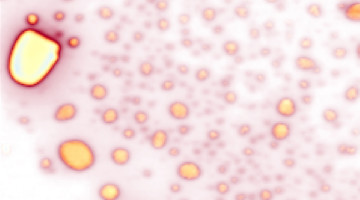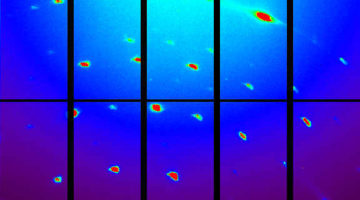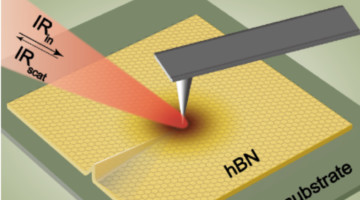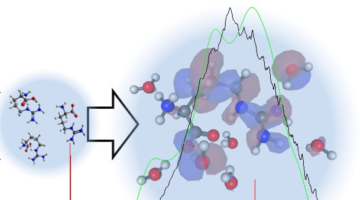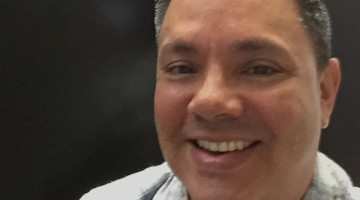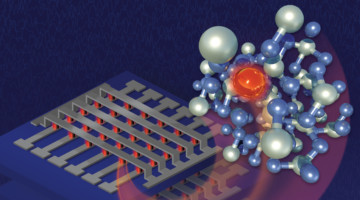Contrary to previous reports, it’s possible to create a rechargeable battery using magnesium ions if the electrode material is first conditioned at high temperature. With twice the charge of lithium ions, magnesium ions hold great promise as the basis for high-energy-density batteries suitable for use in electric vehicles. Read more »![]()
![]()
ALSNews Vol. 408
August 28, 2019
Newly Discovered Minerals Reveal Anomalous Origins
Researchers characterized two highly unusual nickel-containing minerals, both unearthed in an ancient geological site in southern central Siberia. The findings extend our understanding of naturally occurring mineral species and varieties and provide useful insights into the environments leading to the formation of potentially valuable mineral ores. Read more »![]()
![]()
Infrared Nano-Mapping of Local Strain in 2D Materials
Researchers have demonstrated an infrared technique to map and analyze strain in atomically thin crystals of hexagonal boron nitride (hBN) at the nanoscale. This ultrasensitive strain-imaging method could be a promising tool for the examination of low-dimensional materials of interest for electronic and photonic devices. Read more »
Fundamental Property of Arginine Revealed Through Solvation
Just 20 amino acids act as building blocks for all our proteins, but their chemical properties have been difficult to study at the most fundamental level. Combining experiments and theory at the ALS, researchers have now determined the ionization energy of arginine, an amino acid with over 100 isomers. Read more »
Curtis Gomez, Electrical Safety Officer
Curtis Gomez recently became the ALS electrical safety officer. Besides looking out for hazards, his work in motor controls coordination draws from a TV and radio background—and working for a local band that made it big. Read more »
Microelectronics Town Hall Looks Beyond Moore’s Law
On August 16, Berkeley Lab hosted a town hall on future research and collaboration opportunities in microelectronics—a deceptively simple catchword that encompasses the full range of integrated developments needed to push beyond Moore’s Law. Eli Rotenberg gave one of several short talks about how the ALS fits into this effort. Read more »
LAAAMP Brings International Researchers to the Advanced Light Source
This summer, the ALS hosted researchers from Mexico and Egypt as part of LAAAMP—Lightsources for Africa, the Americas, Asia and Middle East Project. Their studies on solar cells and mummy bones exemplify the benefit of increasing access to synchrotron-enabled research. Read more »
ALS Provides Immersive Experience for Summer Interns
High school and undergraduate students don’t usually get a lot of real-world programming and hardware development experience, especially not with things like neural networks and synchrotron light source beamline components. Eighteen students got thrown into the deep end with these topics during their internships at the ALS. Read more »
Facility News and Shutdown Recap: Summer 2019
It’s been a busy summer at the ALS, with developments ranging from the delivery of a new prototype magnet for testing, to the refurbishing of the Building 80 cubicle farm and lounge area. A five-week shutdown checked off several important upgrades and installations, while other Building 6–related projects proceeded in parallel. Read more »
September 4 Deadline for General User Proposals
The User Office is accepting new General User Proposals (GUPs) from scientists who wish to conduct research at the ALS in the 2020-1 (January–June) cycle. The deadline for submissions is September 4, 2019. Applicants are reminded that they may request joint access to the Molecular Foundry, a nanoscience user facility at Berkeley Lab, to support their ALS activities. Read more »
